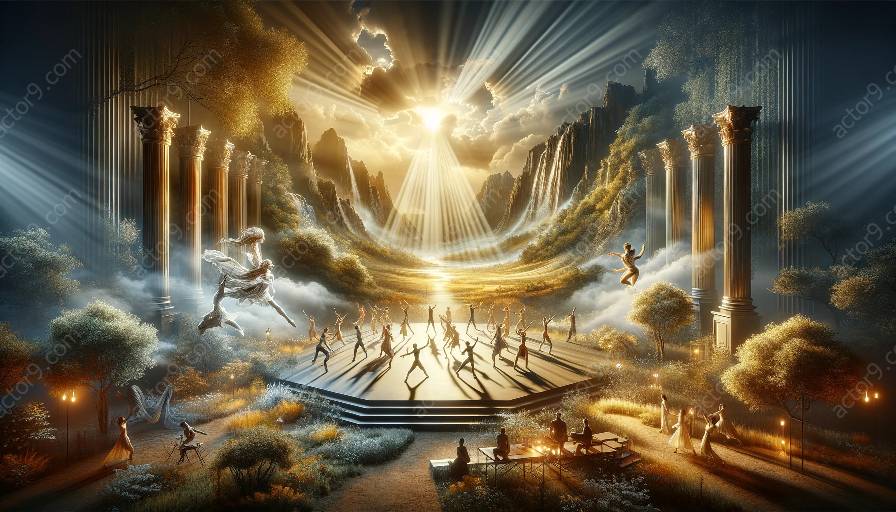Physical theatre is a dynamic and expressive form of performance that often relies on the interaction of movement, space, and emotion to convey stories and ideas. In physical theatre productions, the creative use of lighting plays a crucial role in shaping the audience's focus and enhancing the overall theatrical experience.
Creating Atmosphere and Mood
Lighting design in physical theatre has the power to set the tone and atmosphere of a production. By using different colors, intensities, and angles of light, lighting designers can create a variety of moods, from suspenseful and dramatic to lighthearted and playful. This ability to manipulate the emotional landscape of a performance through lighting can greatly influence how the audience perceives and engages with the unfolding narrative.
Directing Audience Attention
One of the key functions of lighting in physical theatre is to guide the audience's focus to specific elements of the performance. In a production where movement and body language are central, strategic lighting can highlight the performers or specific areas of the stage, drawing attention to significant moments or gestures. This technique not only helps to direct the audience's gaze but also emphasizes the physicality and expression of the performers, enriching the visual storytelling.
Enhancing Spatial Dynamics
Physical theatre often explores unconventional use of space and dimensions, and lighting design can significantly contribute to enhancing the spatial dynamics of a performance. Through the use of light and shadow, designers can create illusions of depth, heighten the sense of confinement or expansiveness, and accentuate the physical interactions between performers and the environment. The interplay of light and space in physical theatre productions can transform the stage into a dynamic and evocative landscape, enriching the audience's perception of the performers' movements and interactions.
Shaping Symbolism and Visual Metaphors
Lighting in physical theatre can be employed as a potent tool for conveying symbolic meanings and visual metaphors. By using lighting to create striking silhouettes, evocative patterns, or abstract compositions, designers can amplify the underlying themes and narratives of a production. The interplay of light and shadow can imbue movements and gestures with deeper layers of significance, allowing performers to embody symbolic elements and amplifying the emotional impact of their physical expressions.
Conclusion
The role of lighting in physical theatre productions extends beyond mere illumination, serving as a vital component in orchestrating the audience's engagement and enriching the expressive potential of the performance. Through its ability to craft atmosphere, direct focus, enhance spatial dynamics, and convey symbolic nuances, lighting design in physical theatre plays a pivotal role in shaping the audience's perception and emotional resonance with the art form.




































